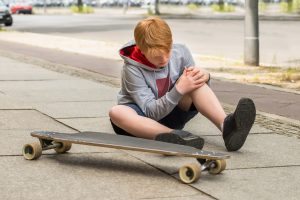The adolescent period of our life is the 2nd most rapid growth period within our life coming second to the first 2 years. Within the adolescent years individuals develop biologically, physically, cognitively, psychologically and socially. This normally all occurs within a space of 18 months, the age it happens is different within each individual.

Hormones surging in adolescent bodies change ligament structure, bones often grow quicker than the muscles surrounding them and coordination skills diminish as the body adapts to its new size.
Many adolescents play sports and it has been shown that sport has a positive influence on teenagers’ mental health. As coaches and as physiotherapists it is important to assist the young sports player in suitable training techniques to minimise the risk of injury.
Common injuries in adolescents
How can such injuries be avoided?
Ligaments can become less efficient at stabilising joints, increased core stabilising exercises and proprioception (balance and coordination) exercises within training can help and this does not mean just holding a plank.
Stretching and eccentric exercises (working muscles as they lengthen) decrease the chance of bones growing longer than the neighbouring muscles and decrease the chance of Severs disease and Osgood Schlatters of the knee.
Strengthening exercises are important to keep a healthy ratio of power to weight as their body weight quickly increases. When developing strength programs it is important to maintain a balance between muscle groups. Commonly the pec (chest) muscles become over dominant in the upper limb causing shoulder injuries and the quads (thigh) muscles can become over dominant in the lower limb causing multiple injuries.
Adolescents are often dictated by fashion. It is of great importance that as they grow their feet have adequate support to prevent a drop in their arch. Support of feet must surpass the need for fashion. The positioning of their feet and the way they walk can significantly influence their lower limb muscle development and prevent knock knee posture or bandy knees (Valgus and Varus) putting undue stress on growing knees.
Adolescents generally have reduced awareness of risk. It is the coach’s and clinician’s responsibility to continually bring to their attention relevant risks and how they can be avoided.